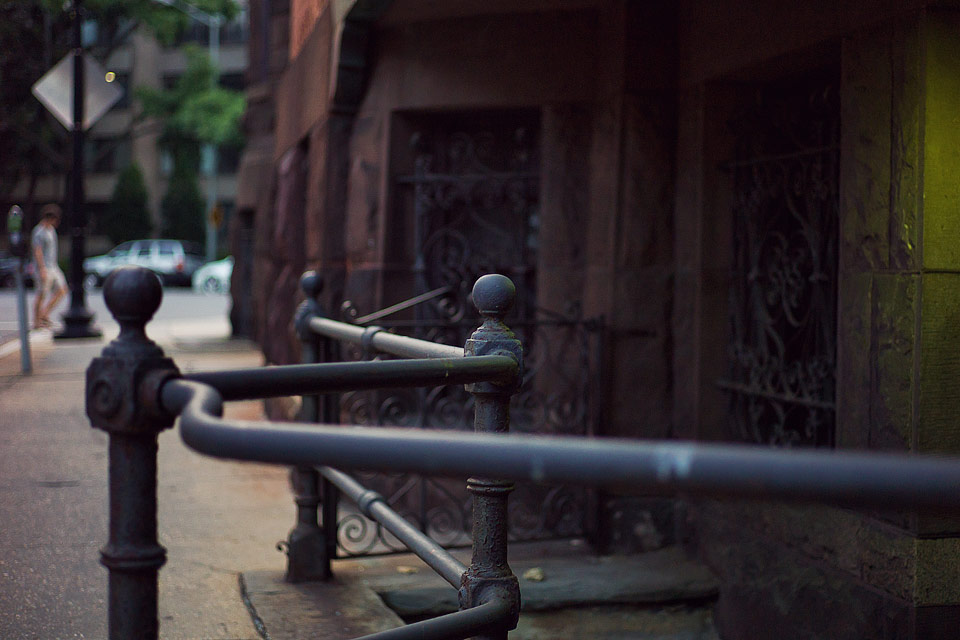Company picnic
Photo / Jul. 22, 2011






More Leica M9 fun — this time at the company picnic at Alex’s beautiful new country estate in The Plains.






More Leica M9 fun — this time at the company picnic at Alex’s beautiful new country estate in The Plains.







For the past several weeks I’ve been obsessing about the Leica M9. I have never even held a rangefinder camera before, but I love the idea of a camera that bridges my 70s-era manual Minolta (which was fun because of its small size and the fact that you had to think a bit before pressing the shutter) and my Canon 7D with it’s big, beautiful instant gratification. So instead of plopping down seven grand, I’m renting a M9 and a couple of lenses from the nice people at lensrentals.com. Here’s my initial thoughts:
• It’s a brick! It may be smaller than a DSLR, but it’s still heavy. In fact, it feels like you’re holding a solid steel box. When people talk about Leica’s excellent build quality that’s what they’re talking about. There’s no doubt in my mind that this camera would last for decades.
• I’m mystified by the SD card placement. To get at the SD card you have to remove the entire bottom plate by turning a screw, removing the bottom plate, setting it down, pulling out the SD card, setting the camera down, and then you can put the SD card in the side of your iMac. The entire time you’re just obsessing about setting the bits of the camera down gingerly because, heck, it’s a $7,000 camera.
• Focusing is an interesting challenge. If you’re unfamiliar, focusing a rangefinder is very different from focusing a SLR because you’re not actually looking through the lens. In a rangefinder, the very center of the viewfinder is a small, bright square that combines two images, one from the main viewfinder and another from the other side of the camera. Turning the focus ring causes the two split images to move further apart (more out of focus) or merge together (in perfect focus.) When your subject has strong contrast, vertical lines or edges, focusing is easy and razor sharp — totally better than using a SLR. But when your subject doesn’t have a strong edge to help you match the two images together focusing can be a challenge. And mostly by challenge I mean it just takes longer. I found focusing on people in street scenes to be a particular challenge — mostly because they’re moving. In a similar case I totally failed to get a good focused shot of a sunflower at f/2 because it was moving in the breeze. I’m sure this just takes practice and learning to set the focus in anticipation of coming action.
• The images are amazing! This was the first time I really felt like I was getting film quality in a digital camera. The combination of huge files and the level of detail when you hit the focus just right is simply astounding. What little noise was present even seemed more film-like than what my 7D produces. Color was excellent and the bokeh produced by the 50mm f/2 Summicron and 35mm Zeiss f/2 Biogen was gorgeous and buttery.


I’m apparently in a wallpaper-making mood these days, so here’s one for the francophiles out there. Tomorrow is la fête nationale, or Bastille Day as it’s known in the U.S., so head down to Paul, grab a pain au chocolat, and join in a chorus of La Marseillaise. (Click image to download the 2560×1440 version.)

A new wallpaper to get you in the 4th of July spirit. Click image to download the 2560px x 1440px version.

Wooden fish decorate one of the tents in the Columbia section of this year’s Smithsonian Folklife Festival.

The Outstanding Directors Awards is the latest addition to the Business Journal’s “signature” events. The plan is for a glitzy black tie EoY-style event in late November.

The Women Who Mean Business creative has always feature a picture of a woman (or multiple women) — and what a pain. She couldn’t be old or young or pretty or ugly or frumpy or sexy. Basically she had to be the most boring stock woman in existence. Well this year I said no more. Women who mean business are bright yellow watercolor splotches!